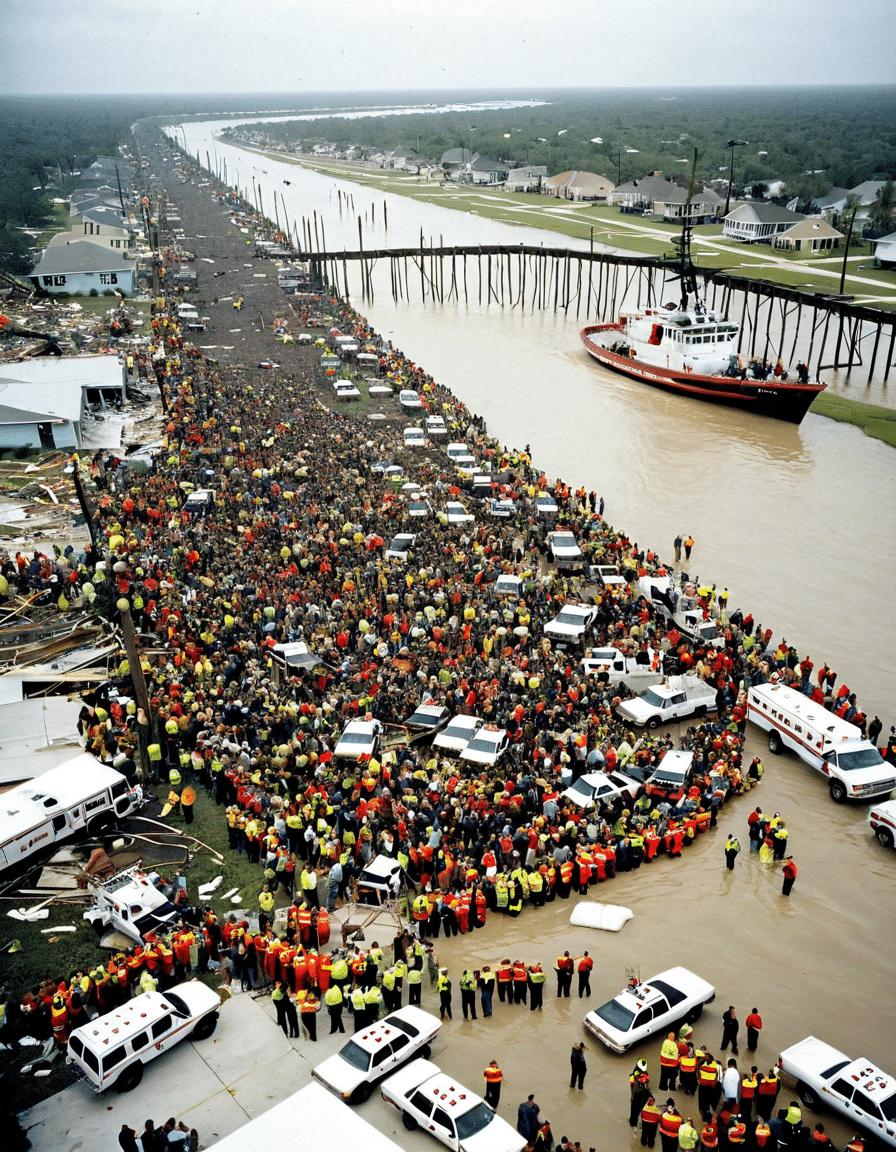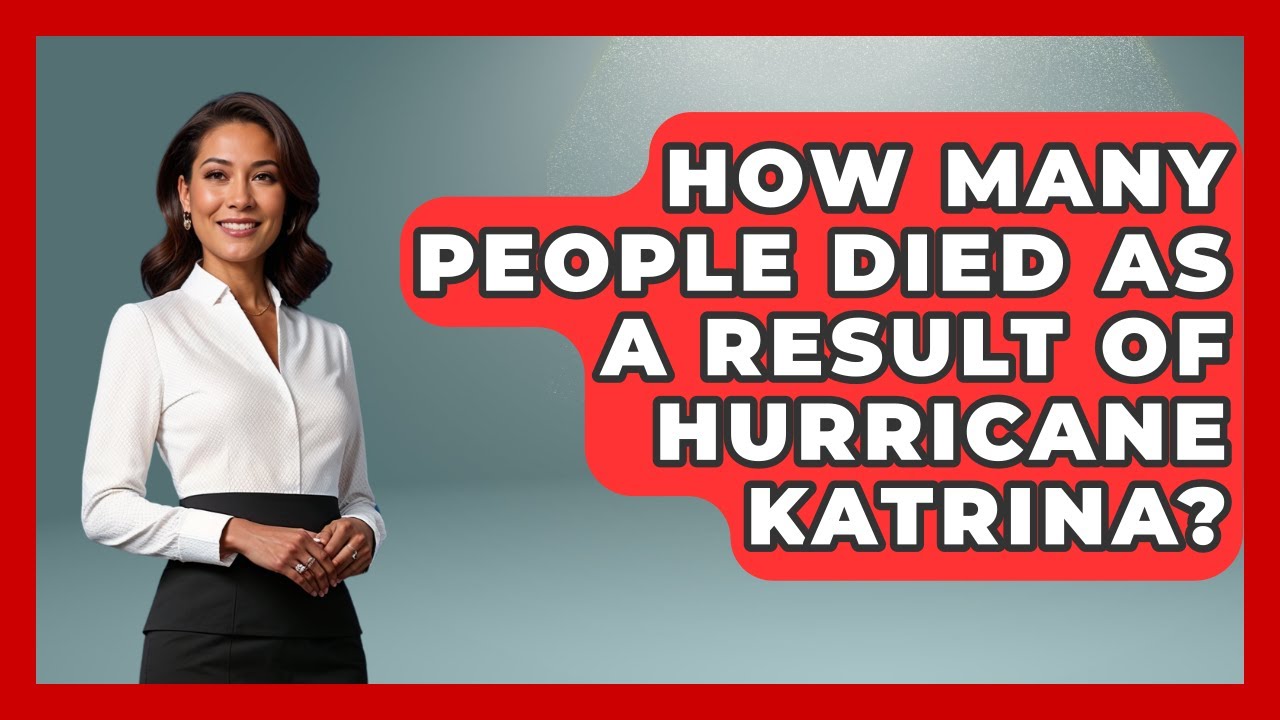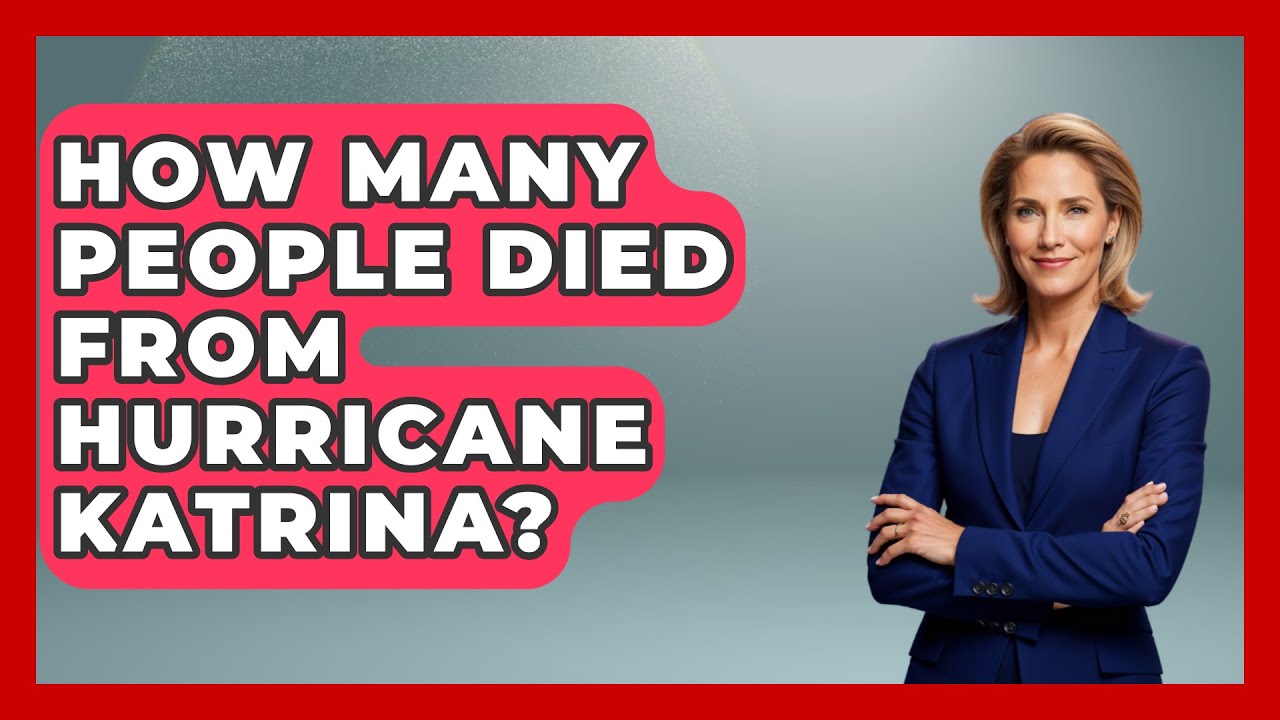The legacy of Hurricane Katrina remains one of the most catastrophic disasters in American history, leading many to ask: how many people died in Katrina? The New Orleans hurricane, which struck in 2005, reshaped not only the city but the response to disasters throughout the nation. With estimates varying, the official death toll stands around 1,833 lives lost, marking a tragic moment in history that continues to hold lessons for disaster preparedness and response.
7 Key Figures in the Death Toll of Katrina
Understanding the full scope of the tragedy involves examining key statistics related to the death toll, comparing Katrina’s impact to other historical disasters, and shedding light on the aftermath and the ongoing implications for communities. Here’s a closer look at seven significant points regarding the loss of life during and following Hurricane Katrina:
As mentioned, the official death toll from Hurricane Katrina is approximately 1,833. This number represents cases confirmed by local and federal authorities, leaving families without closure on many missing persons who were never found. Many families still seek answers about their loved ones, contributing to a lingering sense of tragedy within the city.
The hurricane disproportionately affected vulnerable populations. Studies revealed that nearly 60% of those who died were over the age of 65, highlighting the challenges faced by the elderly during evacuation efforts and sheltering. Access to transportation and health care proved critical as these individuals faced an uphill battle in a disaster scenario where planning seemed inconsistently applied.
For perspective, how many people died on the Titanic? The 1912 disaster resulted in about 1,500 fatalities. While both disasters were tragic, the sheer number of lives lost in Katrina exceeds that of the Titanic, particularly when factoring in the extensive systemic failures that exacerbated the crisis. What’s more startling is how the aftermath of Katrina led to a deeper examination of infrastructure and emergency management, drawing parallels with past disasters.
Beyond immediate fatalities, research shows that indirect deaths rose significantly post-Katrina. Many individuals succumbed to health issues, lack of medical care, or mental health crises in the aftermath, raising total estimates above 2,000 if such factors are included. This raises significant questions about how indirect impact isn’t always captured in initial tallies but remains crucial in recognizing the true toll on human lives.
The economic impact of the disaster, coupled with the death toll, has left lasting scars on New Orleans. The city lost nearly 50% of its population post-hurricane as many residents relocated, drastically altering the community fabric and demographics. New Orleans’ struggle to recover highlights how interconnected loss of life is with broader community infrastructure and resilience.
Conversations surrounding the death toll often include discussions of racial disparities. Over 70% of the victims were African American, bringing to light the societal issues of inequality in access to resources prior to and during the disaster. This disparity serves as a reminder of the ongoing challenges in our society when it comes to equity and resource allocation.
Since Katrina, significant lessons have rippled through the fabric of emergency management in the U.S. The development of the National Incident Management System and improvements in public warning systems reflect attempts to mitigate the loss of life during future disasters. The continued study of Katrina’s impact fuels discussions on better preparedness, showcasing shifts in thinking among local and federal agencies.
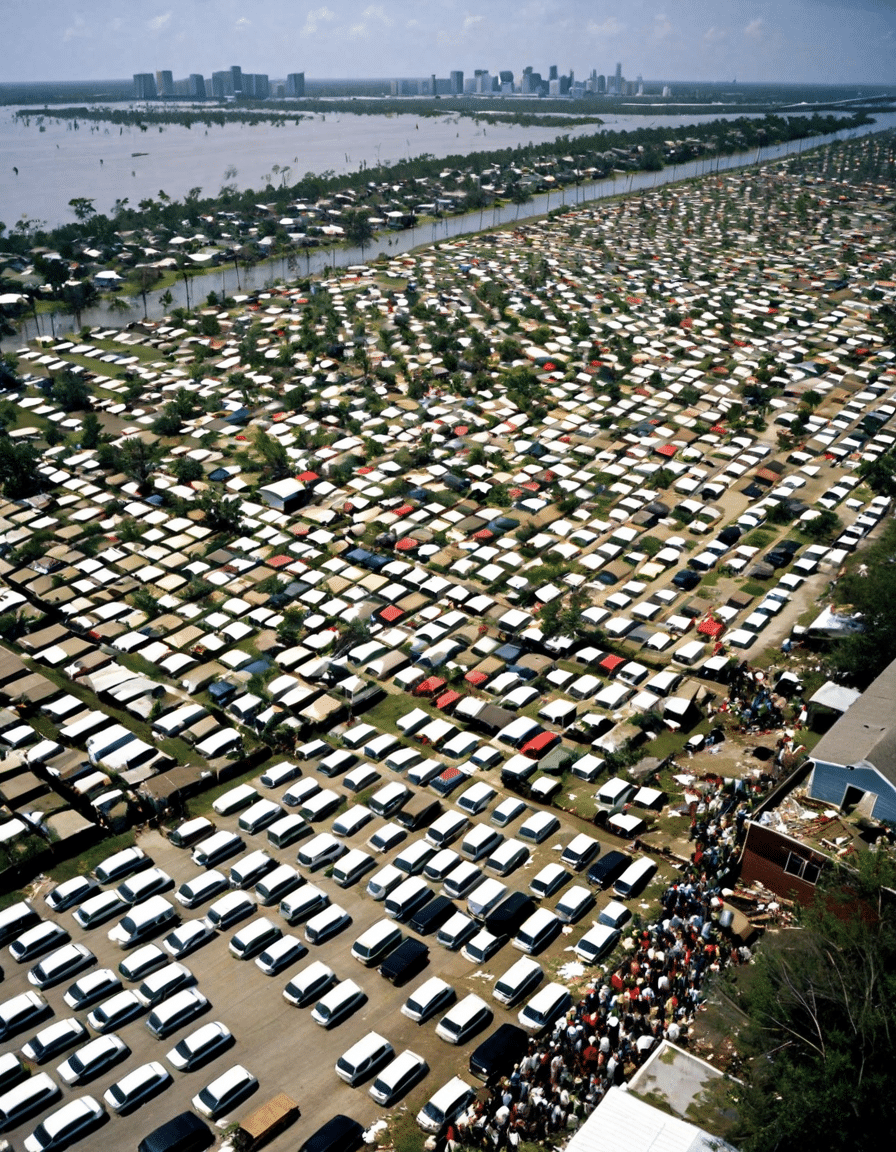
Reflecting on Disaster Preparedness: How Tall is the Eiffel Tower?
Drawing parallels with global landmarks and their historical events can further illustrate the importance of preparedness. For instance, how tall is the Eiffel Tower? Standing at approximately 1,083 feet, it has withstood storms and challenges since its completion in 1889. In contrast, Hurricane Katrina revealed vulnerabilities that left many to question whether American infrastructure could withstand similar crises.
The lessons learned since Katrina included a renewed focus on urban resilience and preparation for weathering disasters. This conversation has led to reform in policies and strategies to protect citizens in the face of climate change, demonstrating an important shift towards proactive approaches rather than reactive ones.
The Ongoing Legacy of Katrina
The true toll of Hurricane Katrina extends beyond just the loss of life; it encompasses ongoing discussions about race, equity, and preparedness in the face of future devastation. As we reflect on how many people died in Katrina, it’s essential to remember that each number represents a life touched by tragedy, and understanding their stories allows us to advocate for better systems and policies to ensure such a disaster never repeats itself.
A face, a name, and a story lie behind those tragic statistics. The ongoing dialogue about hurricane preparedness, equity, and climate change reflects a growing awareness of what it means to endure such a devastating event. Just as Jason Everman rose from the ashes of his past to become a figure of resilience, so too must communities learn, adapt, and strengthen their foundations.
In summary, Hurricane Katrina serves as a profound reminder of the immense emotional and societal cost of natural disasters. Just like the epic tragedies of the past, including those aboard the Titanic, we must harness these lessons to build a safer, fairer future, not only for New Orleans but for all places susceptible to the whims of nature.
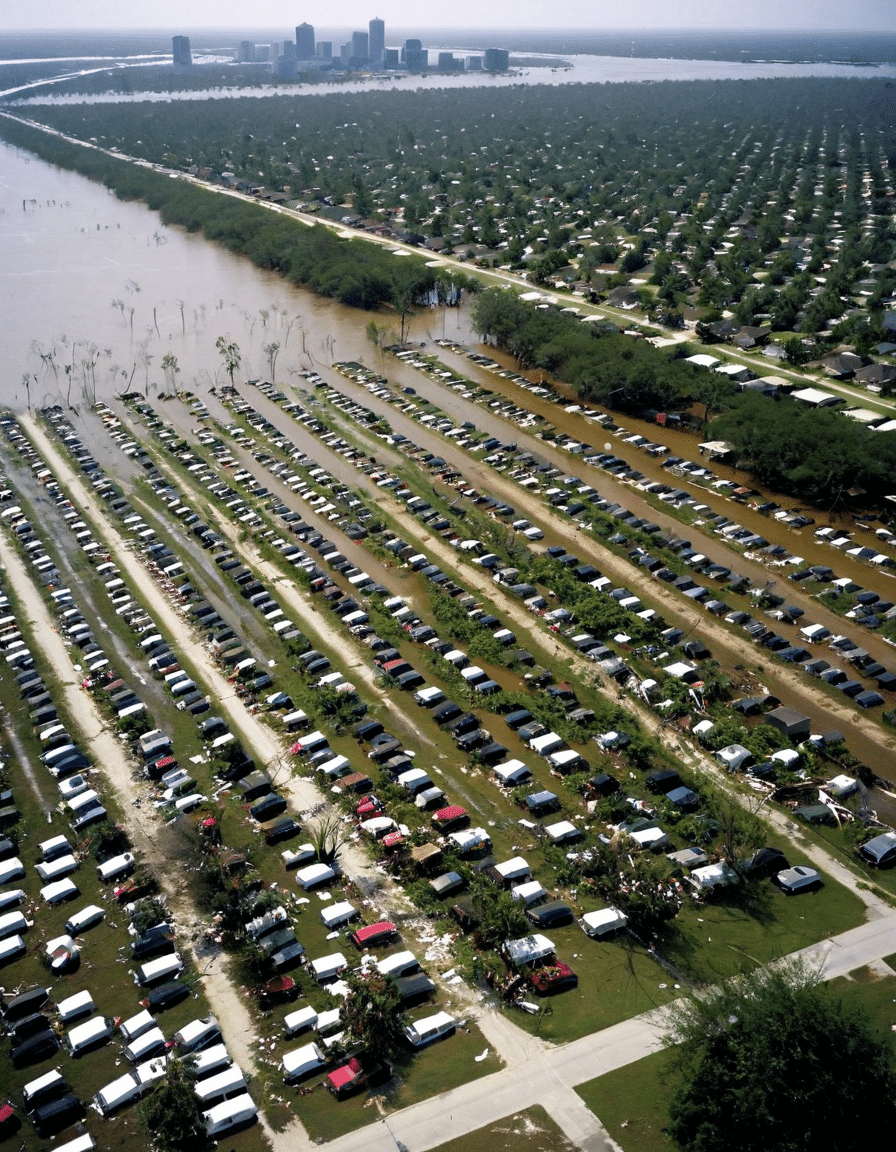
How Many People Died in Katrina: Trivia and Insights
The Human Cost of Katrina
Hurricane Katrina, which struck the Gulf Coast in August 2005, changed countless lives and left a mark on history that many still remember today. The storm resulted in more than 1,800 lives lost, and those figures represent not just numbers but the stories of families and communities torn apart. While discussing how many people died in Katrina, it’s essential to reflect on the resilience and strength shown by those affected. Just like the cast of SWAT works tirelessly to protect their city, the emergency responders during Katrina fought valiantly to save as many lives as possible amidst chaos.
Unforeseen Impact
The aftermath of the hurricane led to various adjustments and discussions about disaster preparedness in America. Curiously enough, you might even draw parallels to the unpredictability of a hit track by Pooh Shiesty, where effects resonate beyond the arena. When we think about the toll of storms like Katrina, it’s all about understanding that these events spur broader conversations about infrastructure and recovery that can ripple through societal culture. Just like how the design and persona of Slipknot Masks hint at a deeper narrative, the lessons from Katrina remind us that each life lost carried a story, embodying the spirit of an entire community.
A Legacy of Awareness
As the years went on, the lessons learned from Katrina laid the groundwork for better emergency response strategies. In a quirky twist, you could even compare it to a thrilling adventure, much like the plot of Rust Creek, where characters must navigate unexpected challenges. By asking how many people died in Katrina, we highlight the importance of these stories and the need for preparedness against future disasters. It’s intriguing to note how timely discussions, like those surrounding Judge Alitos rulings or even events like When Is The Rnc, often link back to the necessity for societal safety.
Learning about the past helps shape the future. So, while it’s vital to remember the tragic figure of how many people died in Katrina, it’s equally essential to engage with the ongoing conversation about safety measures and community resilience. With this knowledge, we can all contribute to creating a brighter, safer tomorrow.
